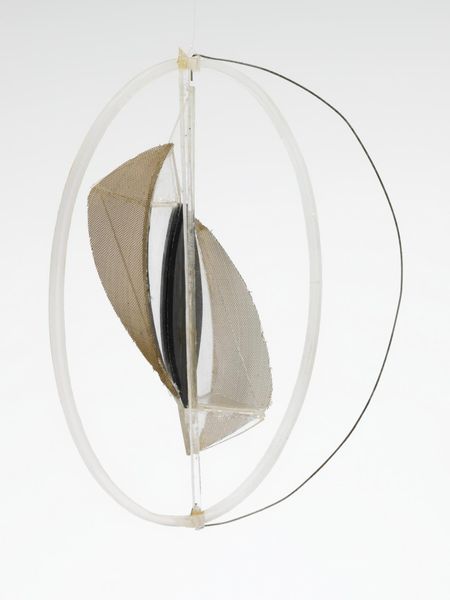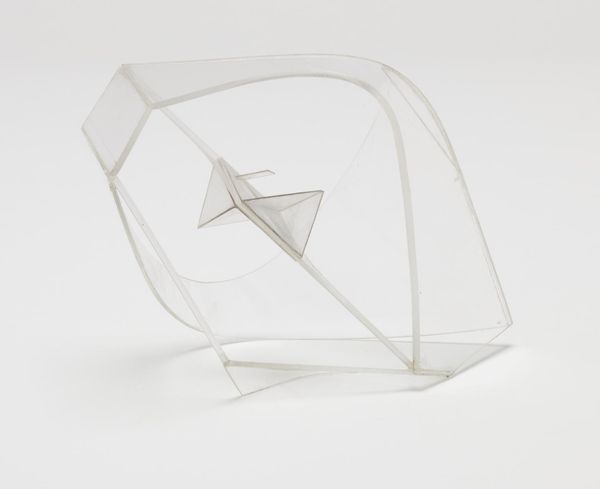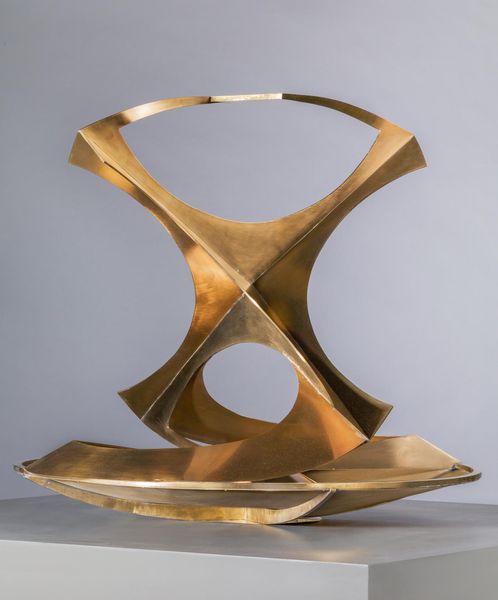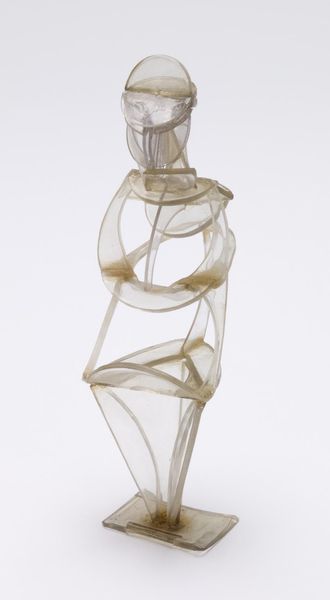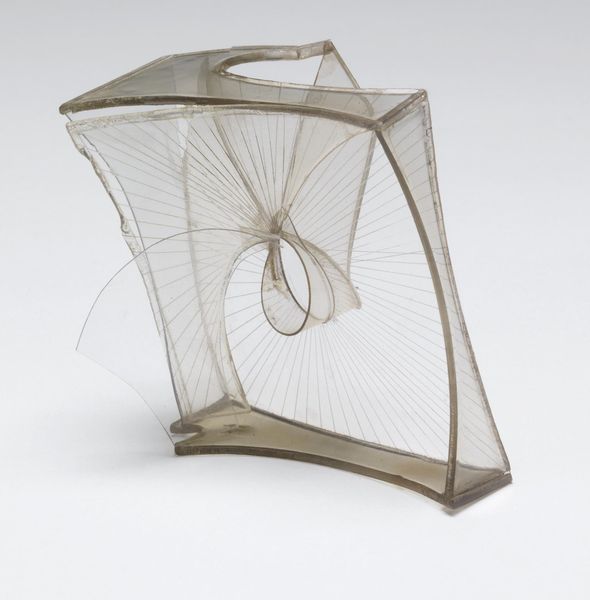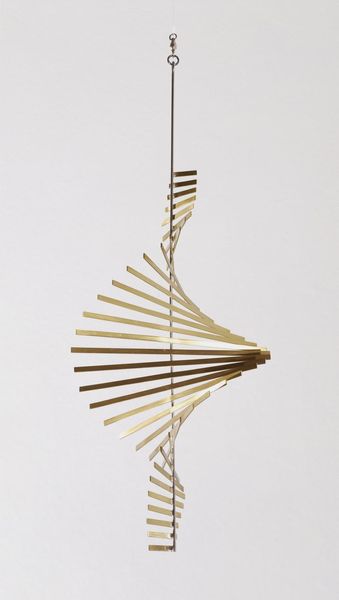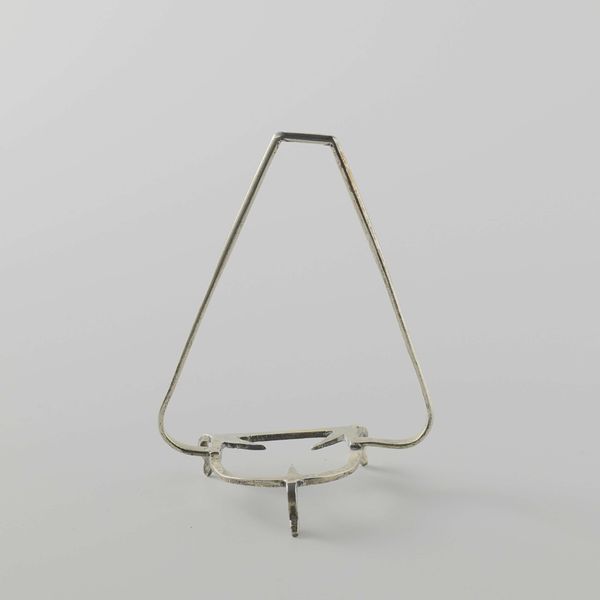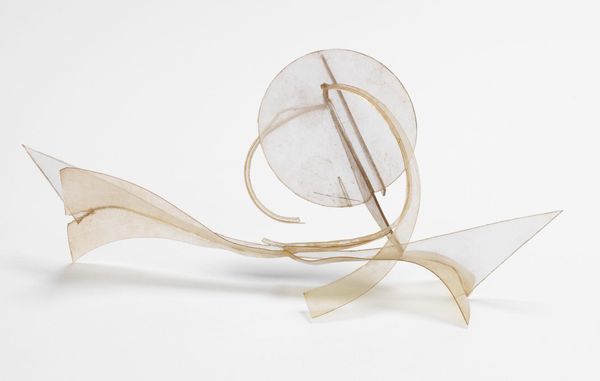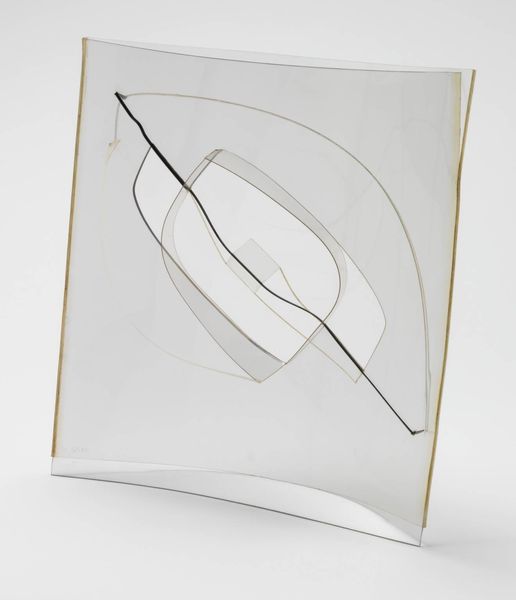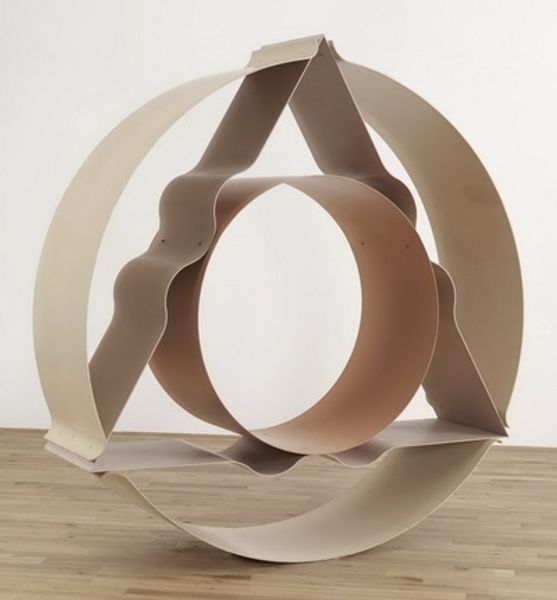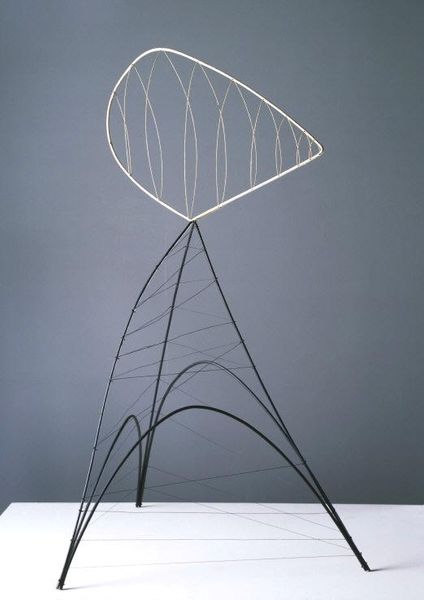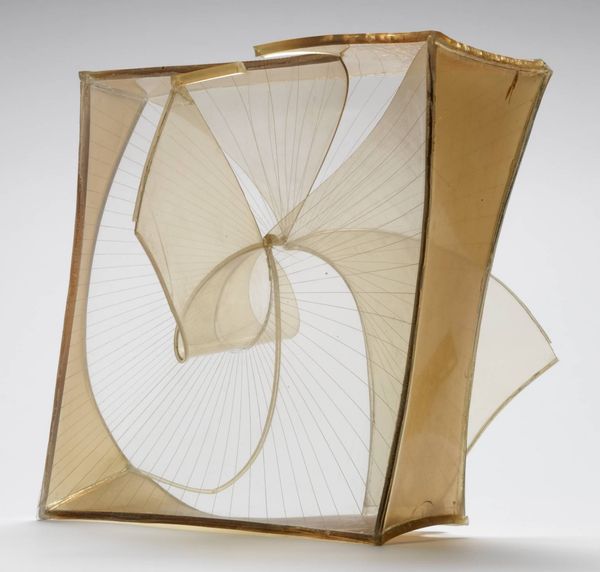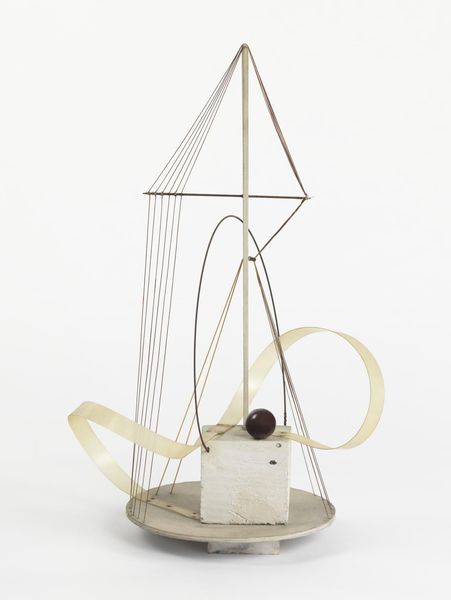
mixed-media, sculpture
#
mixed-media
#
3d printed part
#
constructivism
#
form
#
geometric
#
sculpture
Copyright: Naum Gabo,Fair Use
Curator: Well, isn't this a fascinating object. Here we have Naum Gabo's 'Model for Torsion,' created in 1928. Gabo, of course, was a leading figure in the Constructivist movement, and this mixed-media sculpture currently resides here at the Tate Modern. Editor: It’s delicate, almost weightless. The color and translucent material give it a ghost-like appearance. Is it supposed to be hanging? Because it looks suspended between breaths. Curator: It's designed to be suspended. Gabo was deeply interested in representing space and movement in his sculptures. The Constructivists were aiming for the new image for a new age, so traditional ideas about sculpture as a mass or volume are being upended here. Editor: Mass is replaced with line. You can almost imagine it twirling in a gentle breeze. You said something about "torsion"... that sounds about right! It's the artistic embodiment of the act of twisting! Is this an industrial aesthetic? Curator: Absolutely. The Constructivists often took inspiration from engineering and architecture, aiming to bring art into dialogue with technology. The 'Model for Torsion' reflects that ethos, presenting a seemingly simple form that reveals complex spatial relationships. It embodies the spirit of invention and progress that defined much of the early 20th century. The use of plastics like celluloid was quite forward thinking for sculpture at the time! Editor: I find myself drawn to the points where the planes intersect, like lines drawn in space. But, is it emotionally sterile for you? The lines give a sense of both fragility and, strangely, of power. Does this work challenge, for example, the prevalence of traditional patriarchal symbols in monumental sculpture, and what alternative models do the constructivists give us? Curator: That's precisely the kind of historical insight we're hoping to offer at Tate Modern! Yes, Gabo’s construction implicitly rejects mass, weight, and traditional values of nationalistic sculptural projects found across Europe during this time. And also important, is the potential this holds as a model or plan for architecture... not sculpture as memorial but sculpture as a prototype for how humans could live in harmony in space! Editor: Amazing. I’ve got this newfound respect for this wisp of a sculpture and now it appears less transparent and more complex. Curator: Agreed. Looking back, I see a potent symbol of a radical future that never quite materialized.
Comments
No comments
Be the first to comment and join the conversation on the ultimate creative platform.
